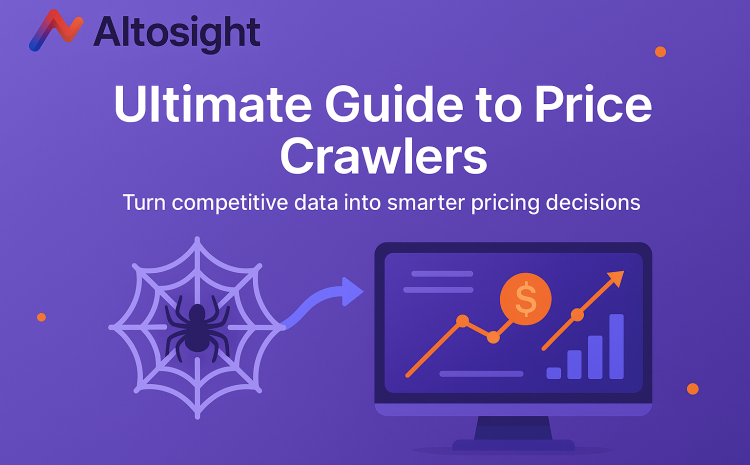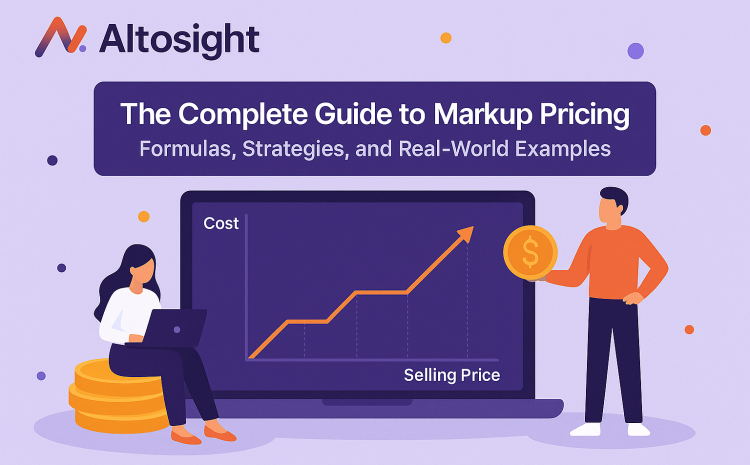
In the world of pricing strategies, few tactics are as hotly debated—or as potentially destructive—as predatory pricing.
At first glance, it might even look like a good thing for consumer. A company slashes prices aggressively, products become more affordable, and everyone wins—right? Not quite.
Beneath the surface, predatory pricing is a calculated move to eliminate competition, consolidate market power and eventually raise prices once rivals are out of the way.
What is predatory pricing, and how do you know it when you see it? Is it illegal, unethical or simply smart business? This guide will explore:
- The definition of predatory pricing in both economics and law
- What predatory pricing involves and how it works in practice
- Real-world predatory pricing examples
- The impact on competition, markets, and consumers
- Why it’s so hard to prove in court
- How it compares with other pricing strategies
Let’s dig deeper.
What Is Predatory Pricing?
Predatory Pricing Definition (Economics & Legal View)
In economics, predatory pricing refers to a strategy where a firm sets prices deliberately below cost—often for an extended period—with the goal of driving out competitors. Once rivals have exited the market, the firm then raises prices to recoup losses and exploit its market position.
The definition is more precise from a legal perspective, particularly in antitrust law. Courts and regulators look for two elements:
- Pricing below an appropriate measure of cost (often marginal or average variable cost)
- Intent and ability to recoup those losses through higher prices after rivals exit
This differs from loss leaders or penetration pricing, which also involve selling below cost—but typically to attract customers, gain market share, or introduce new products without intent to eliminate competition.
What Does Predatory Pricing Involve?
Predatory pricing typically unfolds in two distinct phases:
- Aggression Phase – The firm sets prices at or below cost, often significantly undercutting competitors. The aim is not profit but survival at any cost—at least for now.
- Recovery Phase – After rivals exit the market or are significantly weakened, the predator raises prices—sometimes sharply—to recoup earlier losses and establish dominance.
Critically, the strategy only works if the predator has deep pockets (i.e., enough capital to sustain losses) and a clear path to market power. That’s also what makes it so dangerous and so hard to prove.
How Does Predatory Pricing Work in Practice?
Strategic Rationale
At its core, predatory pricing is about trading short-term pain for long-term gain.
Why would any company sell at a loss? Because in industries where scale or market control is king, eliminating just a few competitors can fundamentally shift the economics.
Once rivals are gone, the firm can raise prices, reduce innovation and extract more value from customers.
Predatory pricing has been observed in:
- Airlines, where dominant carriers cut prices on specific routes when low-cost competitors emerge
- Retail, where large chains underprice local businesses into extinction
- Tech, where platforms offer below-cost tools or services to gain lock-in and later monetize
In each case, the tactic isn’t about beating the competition—it’s about removing it entirely.
Challenges in Execution
Despite the potential rewards, predatory pricing is risky:
- It requires deep financial reserves—many firms simply can’t afford sustained losses
- It assumes competitor exit—which may not happen
- It invites regulatory scrutiny, particularly if the market is large or politically sensitive
- And it doesn’t always work—some companies can weather the storm, or new entrants may appear quickly
In practice, most predatory pricing strategies either fail or backfire, especially in markets with agile competitors and attentive regulators.
Predatory Pricing Examples in Real Life
This is where theory meets reality. Here are some of the most notable alleged predatory pricing cases, illustrating how alleged predatory pricing cases can play out across industries.
Amazon and Diapers.com: A Price War That Changed the Game
In the early 2010s, Amazon entered a fierce pricing battle with Quidsi, the parent company of Diapers.com, which had quickly gained popularity among parents for its fast delivery and focused service.
As competition intensified, Amazon began offering significant discounts on diapers—reportedly cutting prices by up to 30% and matching or undercutting Diapers.com across various listings.
This pricing pressure, combined with Amazon’s broader logistics and ecosystem advantages, made it increasingly difficult for Quidsi to maintain its market position.
In 2010, Amazon acquired Quidsi for approximately $545 million. Over time, Diapers.com was folded into Amazon’s broader retail platform, and prices gradually aligned with Amazon’s overall strategy.
While this case is often referenced in discussions around competitive pricing and market strategy, no formal legal action was taken.
Instead, it serves as a prominent example of how large-scale pricing decisions can reshape entire segments, particularly in fast-moving consumer goods.
Walmart: Local Price Wars and Legal Trouble in Arkansas
Walmart has long been scrutinized for its pricing practices, especially in rural and small-town markets where it has used ultra-low pricing to dominate local retail.
One of the most notable legal actions came in 1993, when a judge in Arkansas ruled that Walmart engaged in predatory pricing.
The court found the retailer guilty of selling popular staples—like health and beauty items—below cost in a way that aimed to force local competitors out of business. Walmart was ordered to stop the practice and pay damages.
Beyond the U.S., Walmart has faced similar accusations internationally, including Mexico, where regulators investigated the company’s pricing strategies as part of broader antitrust concerns.
These cases highlight that predatory pricing doesn’t always require global dominance—even regional or local pricing strategies can trigger legal consequences if they harm competition and lack legitimate business justification.
American Airlines: A Price War That Ended in Court—and Was Dismissed
In the late 1990s, American Airlines became the center of a high-profile pricing dispute when it responded to new low-cost carriers entering key routes out of its Dallas-Fort Worth hub.
As competitors like Vanguard Airlines and Sun Jet attempted to gain traction, American matched or beat their prices, added capacity and shifted its scheduling to directly compete on those specific routes. These moves led to sharp fare declines and significant pressure on the new entrants—some of whom eventually withdrew from the market.
The U.S. Department of Justice (DOJ) filed an antitrust lawsuit in 1999, alleging that American Airlines engaged in predatory pricing to eliminate competition and later raise fares.
However, the case was ultimately dismissed by a federal judge in 2001, who ruled that the airline’s actions were consistent with competitive business behavior rather than illegal pricing tactics.
This case stands out not because it ended in a conviction, but because it illustrates how aggressively pricing on specific routes can reshape competition—even if it doesn’t meet the legal threshold for predation.
Microsoft: Bundling, Browser Wars and Market Control
One of the most historically significant competition cases in the tech world was the United States v. Microsoft Corp., filed in 1998. While not a textbook example of predatory pricing through below-cost sales, the case spotlighted how strategic bundling and leveraging platform dominance can reshape competitive landscapes—particularly in software markets.
At the heart of the case was Microsoft’s decision to bundle its Internet Explorer browser for free with the Windows operating system. This move wasn’t about monetizing the browser directly.
Rather, it was intended to cut off Netscape Navigator’s distribution channels and solidify Windows’ role as the central software platform for PCs.
By making Internet Explorer essentially unavoidable on Windows devices—at no direct cost—Microsoft gained a massive distribution advantage.
This tactic didn’t involve underpricing in the traditional sense, but it did marginalize a key competitor, raise barriers to entry, and extend Microsoft’s influence across the browser market.
The U.S. Department of Justice sued Microsoft for antitrust violations under the Sherman Act, arguing that it had abused its monopoly power in the operating system market to suppress innovation and maintain control. The court ruled in favor of the DOJ, stating that Microsoft had violated antitrust law, although the eventual settlement stopped short of breaking up the company.
This case remains one of the most frequently cited modern examples of platform-based competition control—where pricing plays a role, but the core issue lies in how distribution, bundling, and market leverage are deployed to eliminate threats.
How Does Predatory Pricing Hurt Competition?
Impact on Competitors
The most obvious victims of predatory pricing are smaller competitors. They often lack the financial resilience to match below-cost pricing and are quickly forced to:
- Exit the market
- Scale down
- Sell at a loss
Even large firms are vulnerable if they’re not diversified or liquid enough to outlast a pricing war.
Impact on Consumers
Ironically, consumers benefit in the short term—but pay later:
- Lower prices during the predation phase may seem like a win
- But after rivals disappear, prices often rise sharply
- Consumers also face fewer choices, less innovation, and deteriorating service over time
It’s a classic bait-and-switch, where the public benefit is temporary and often superficial.
Market-Level Effects
Over time, predatory pricing can reshape entire markets:
- It creates barriers to entry, as new firms fear similar retaliation
- It encourages monopolistic or oligopolistic structures
- It may reduce overall market efficiency, as price signals become distorted
The end result? A less competitive, less dynamic market—often hidden behind the illusion of low prices.
Why Is Predatory Pricing So Hard to Prove?
Legal Challenges
To win a predatory pricing case, regulators must prove two critical elements:
- Below-cost pricing (typically based on marginal or variable cost)
- Intent and ability to recoup those losses through future pricing power
The burden of proof is high. Companies can always claim they were being “competitive,” “strategic,” or “customer-focused.” And courts are hesitant to penalize low prices without clear evidence of anticompetitive intent.
Not All Low Pricing Is Predatory
Many legal and ethical pricing strategies look similar to predatory pricing but serve different purposes:
- Loss leaders attract foot traffic or cross-sell opportunities
- Penetration pricing introduces a new product or service at scale
- Seasonal or promotional pricing clears inventory
Without intent to eliminate competition and raise prices, these strategies are often considered pro-consumer.
Global Legal Standards
- United States: The Sherman Act governs predatory pricing cases, but the courts set a high bar
- European Union: The AKZO case established stricter standards for proving abuse of dominance
- United Kingdom: Under the Competition Act 1998, firms can be fined if pricing below cost is shown to harm competition
Despite these frameworks, successful prosecutions are rare and complex.
Predatory Pricing vs. Other Pricing Strategies
Limit Pricing vs. Predatory Pricing
Limit pricing is when a firm sets prices just low enough to discourage entry but not necessarily below cost. The goal is to make the market appear unattractive to would-be entrants.
In contrast, predatory pricing involves actual losses, and the intent is to push out existing competitors, not just deter new ones.
Loss Leaders and Penetration Pricing
These strategies also involve pricing below cost—but with different motives:
- Loss leaders aim to boost overall basket size or customer loyalty
- Penetration pricing seeks to rapidly grow user base or market share
- Neither strategy necessarily intends to harm competitors or raise prices later
Intent and long-term behavior are key differentiators.
Ethical and Unethical Pricing Strategies
Predatory pricing sits in the broader discussion of pricing ethics:
- Ethical: Transparent, value-based, competitive pricing
- Unethical: Deceptive, manipulative, or deliberately harmful tactics
If the primary purpose of a pricing strategy is to cripple competition, it often crosses the line from aggressive to predatory.
Key Takeaways from Famous Predatory Pricing Cases
Here’s a quick recap of some high-profile examples and the lessons they teach:
| 📉 Company | 🎯 Tactic | ⚖️ Outcome | 💡 Lesson |
|---|---|---|---|
| Amazon | Sold diapers at aggressively low prices | Acquired Diapers.com | Price wars can be strategic weapons |
| Walmart | Sold essentials below cost in local markets | Found guilty of predatory pricing in Arkansas | Below-cost pricing can trigger legal action, even at a local level |
| American Airlines | Matched low-cost rivals on key routes with fare drops and added capacity | DOJ filed suit, but case was dismissed | Route-level price wars can reshape competition and attract scrutiny |
| Microsoft | Bundled software pricing | Antitrust fines | Pricing power + platform control = regulatory risk |
Conclusion
Predatory pricing is a high-stakes gamble—one that can reward dominant firms with market control, but at significant economic and ethical cost.
It’s also difficult to define, detect, and prosecute. Not all low prices are harmful, and not all price wars are anticompetitive.
But when pricing becomes a weapon to undermine market fairness, the long-term impact on innovation, competition, and consumers can be profound.
As pricing professionals, strategists, or policymakers, the challenge is to look past the price tag and examine the intent, context and consequences of pricing behavior.
The goal isn’t to discourage low prices—but to ensure they’re used to compete, not to crush.





